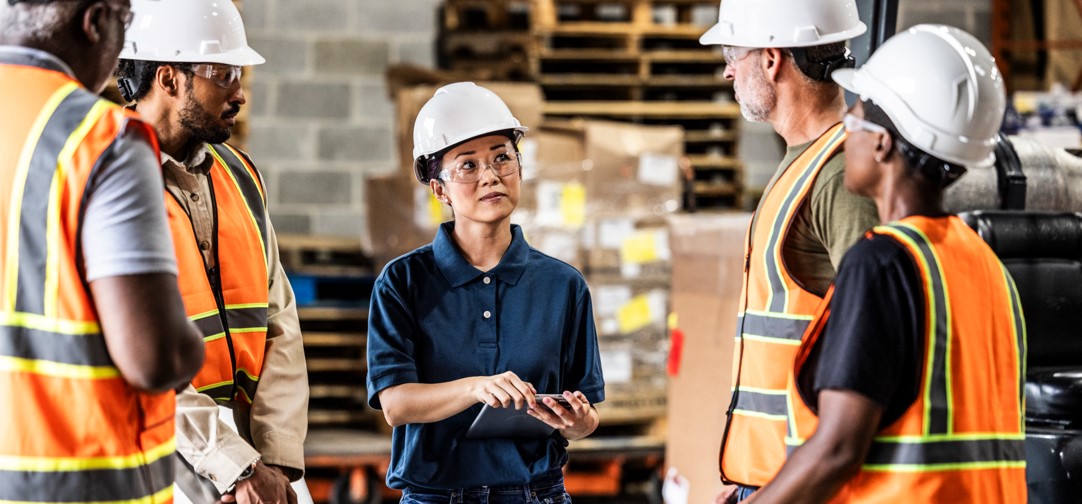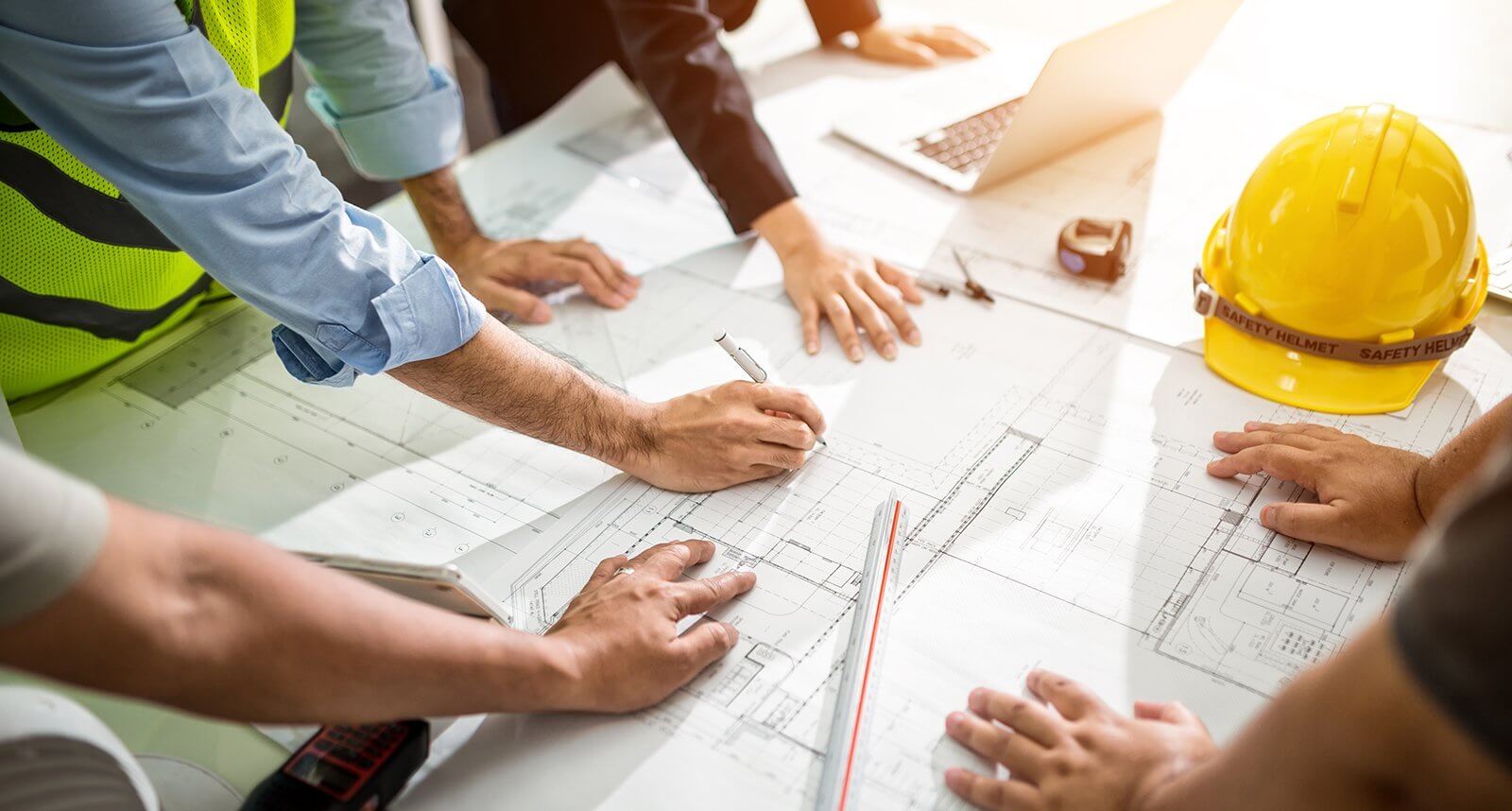by Jeffrey C Kadlowec, Architect
Abstract
Lean construction looks for ways to reduce waste, improve quality and enhance performance of building projects to increase profitability and deliver more value. Construction remains a dangerous, dynamic and demanding work environment. Focusing on safety management to reduce accidents, injuries and fatalities provides cost benefits. Implementing lean tools and technological advancements further enhances these efforts.
Keywords: safety management, lean construction, lean tools & technology

Safety Management
Project-related incidents and job-site accidents cause significant construction waste, are extremely costly, and create legal issues and financial liabilities. Adopting the principles of lean construction can significant reduce these negative impacts. This management philosophy enhancing the overall quality and performance of building projects through implementation of best practice increasing profitability and delivering greater value [Nayak 2023].
Construction is inherently dangerous and the labor force remains highly unorganized. The working environment is extremely dynamic and demands constant supervision. Barriers exist across all sections due to varying levels of knowledge, language and skills [Nayak 2023]. Adequate safety training, implementation of safety policies, and commitment by workers and management is essential to preventing injuries and fatalities along with potential damage to materials and production.
As society continues to develop, so does the industry of construction and the current boom, with it comes quality control issues and an increase in safety accidents [Sun 2023]. Not enough attention is placed on construction safety management. Poor leadership and lack of responsibility along with failure to investigate hazards or address these problems result in further quality and safety issues. Most migrant workers do not possess the knowledge, skills or safety awareness necessary to tackle these issues, therefore construction project managers must devote more attention towards training of staff and management and maintenance of machinery and equipment [Sun 2023].
All construction sites pose unsafe conditions which expose workers to an array of potential dangers. Reports of structural collapses, damage to buildings, and injuries or fatalities are evidence of poor safety practices [Blavo 2023]. Most of these incidences are preventable with elimination or reduction of hazards through safety management by stakeholders and safety education of construction workers. Emergency management, proper instruction and safe practices must be implemented on jobsites. Programs could be established to identify and communicate these goals. Attitudes and behavior towards safety awareness can be improved through simulations and drills. One (or more) experienced and certified safety officer(s) should be assigned to every building project and charged with those tasks [Blavo 2023].
As the industry continues to evolve, allowing for more complex design and construction requirements, the utilization of technology to address safety issues is becoming essential. These tools can link all parts and phases of a project, will provide personnel with a relatively safe working environment, and improve the final quality and performance [Jia 2022]. Monitoring should focus on equipment, materials and labor throughout the entirety of a construction project. Building information modeling (BIM) is currently being used in architectural design and visualization and construction estimating and management; real-time data can be collected and viewed with mobile devices on-site to assist in safety management, inspections and maintenance.
Lean construction principles reduce resource waste and increase project value through continuous improvement. According to this philosophy, poor safety and occupational injuries are considered wastage [Morshidi 2022]. Enhancing safety performance, reducing injury rates and eliminating fatalities increases productivity and efficiency of the construction process. Assessment of risks and preparedness for uncertainties are the goal of safety management. Implementing lean tools and procedures, such as PDCA, 5-Step Process, the 5 Whys, and the Last Planner, provide cost and scheduling benefits. Utilizing visual management (VM) in coordination with BIM and critical path method (CPM), along with error-proofing further those efforts. Although lean construction remains an unpopular term throughout the construction industry [Morshidi 2022], current studies and research shows that more knowledge and better understanding will lead to net positive results.
References
Blavo, Femij; Evarestus, Asogwa & Evarestus, Asogwa. (2023). Management of Hazards and Prevention of Accidents and Injuries in Building Construction Using ‘Hierarchy of Controls and Safety Education’. 33. 585-594.
Jia, Zitong. (2022). Development and Advanced Technologies of Construction Safety Management. Highlights in Science, Engineering and Technology. 28. 261-266. 10.54097/hset.v28i.4144.
Morshidi, Zalikha; Othman, Mohd Khairul Fitri; Mohamad Bohari, Asmah Alia & Liyana, Syamimi. (2022). Awareness and Adoption of Lean Construction Tools to Enhance Safety in Construction Projects. International Journal of Service Management and Sustainability. 7. 1-20. 10.24191/ijsms.v7i2.19938.
Nayak, Narayan; Kadiwal, Anant & Manjunatha, L.R. (2023). Need for Construction Safety Measures in Modern Day Constructions. International Concrete Construction Technologies. vol 01, iss 06, Mar-Apr. www.nbmcw.com.
Sun, Shiwei. (2023). Analysis of Building Construction Quality Control and Safety Management. Journal of Architectural Research and Development. 7. 59-63. 10.26689/jard.v7i2.4834.



